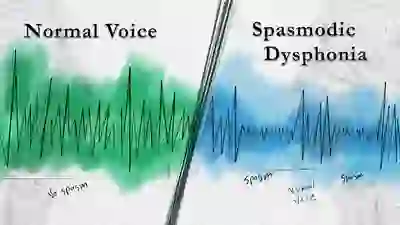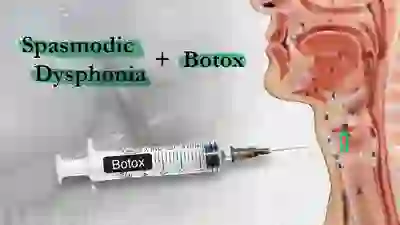Post-Treatment for AB-SD: What to Expect?
(the “my voice drops out to a whisper” SD variant)
Robert W. Bastian, M.D. — Published: September 8, 2023
Introduction
You have just undergone an injection with botulinum toxin (Botox) for the “intermittent whisper” voice caused by your abductory spasmodic dysphonia. For a few days you may notice slight soreness in the area of your larynx, and perhaps a small bruise on the front of your neck. For the next three to four months (the average time before you will need another injection) you will go through the stages summarized below.-
The Initial Wait
For a day or two your voice will usually be unchanged. Approximately 24–72 hours later you should find that the spasms are diminishing and that your voice is stronger and steadier. At the same time you may (but not necessarily) start to experience some shortness of breath. In other words, the breathing symptoms may not happen at all; they may be subtle; or they could be very noticeable and even uncomfortable and, rarely, anxiety-producing. -
The “Better Voice But I’m Short Of Breath” Phase
This phase may last from a few days up to many weeks. (Again, some don’t experience any shortness of breath.) During this phase, you will notice that your voice is better, even though some spasms remain. You may also experience some involuntary vocal sounds when you breathe in suddenly. Bed partners may notice a soft inspiratory vocal sound during sleep, and it may occasionally wake you up. -
The “Spasms Are Increasing” Phase
Typically, during the second to fourth month after your injection you may find that your voice is again worsening. When you notice this happening, you may not need another injection immediately, because you may still have many weeks of reasonable vocal function. As spasms become more noticeable, you should consult your calendar and arrange another injection appointment.
After first injections
Call your physician—approximately one week later—and leave a voice sample on their personal voicemail line so that they can hear the full extent of the effect of Botox on your voice. The message should be left at the end of the day, not in the morning (when voice can sound stronger). Also, to record the sound of your breathing, breathe out once until your lungs are empty and then, with mouth open, fill your lungs as quickly as possible. We will of course be interested in what you have to say, but equally in how your voice sounds and whether you make any noise when you breathe in.Variability of results between injections
No two injections will yield exactly the same results, even if the technique of injection and dose are kept the same. This may relate, among other things, to small, unavoidable differences in placement of the medication within the small muscles of the voicebox.Differences between yours and other persons’ results
Some wonder why another person with SD achieves a longer benefit or has less initial shortness of breath. This is because each individual’s response is determined not only by dosage and placement, but also by differences in sensitivity to the medication. Some fortunate persons benefit for considerably longer than others. A few others consistently develop recurrent spasms very quickly after injections, even when the dose is increased to high levels. Furthermore, in the same way, some persons may tend to develop noticeable initial shortness of breath, even if the dosage of Botox is reduced to very small levels.The Unsatisfying Response
Achieving a good result for abductory SD can be more difficult than for adductory SD. Occasionally, an individual wonders if the injections are worth the bother. Furthermore, perhaps initial breathing symptoms were anxiety-provoking. Maybe the duration of benefit was disappointingly short. Should any of these be your experiences, keep in mind that alterations of technique, dosage, timing of injections, and so forth may help achieve a better response in the future.Share this article

Play Video about Normal voice compared to Spasmodic Dysphonia YT Thumbnail
Spasmodic Dysphonia
In this video, Dr. Robert Bastian reviews the various types and subtypes of a rare neurological voice disorder called spasmodic dysphonia (SD). Numerous voice examples are included, along with video of the vocal cords.
Play Video about Spasmodic Dysphonia and Botox YT Thumbnail
When Botox Disappoints
In this video, Dr. Bastian discusses common problems with Botox treatment for spasmodic dysphonia (SD). He delivers clear, practical advice that can be used to increase the effectiveness of Botox treatments for SD.

National Spasmodic Dysphonia Association
A nonprofit 501(c)3 organization dedicated to improving the lives of people affected by SD and related voice conditions through research, education, awareness and support.